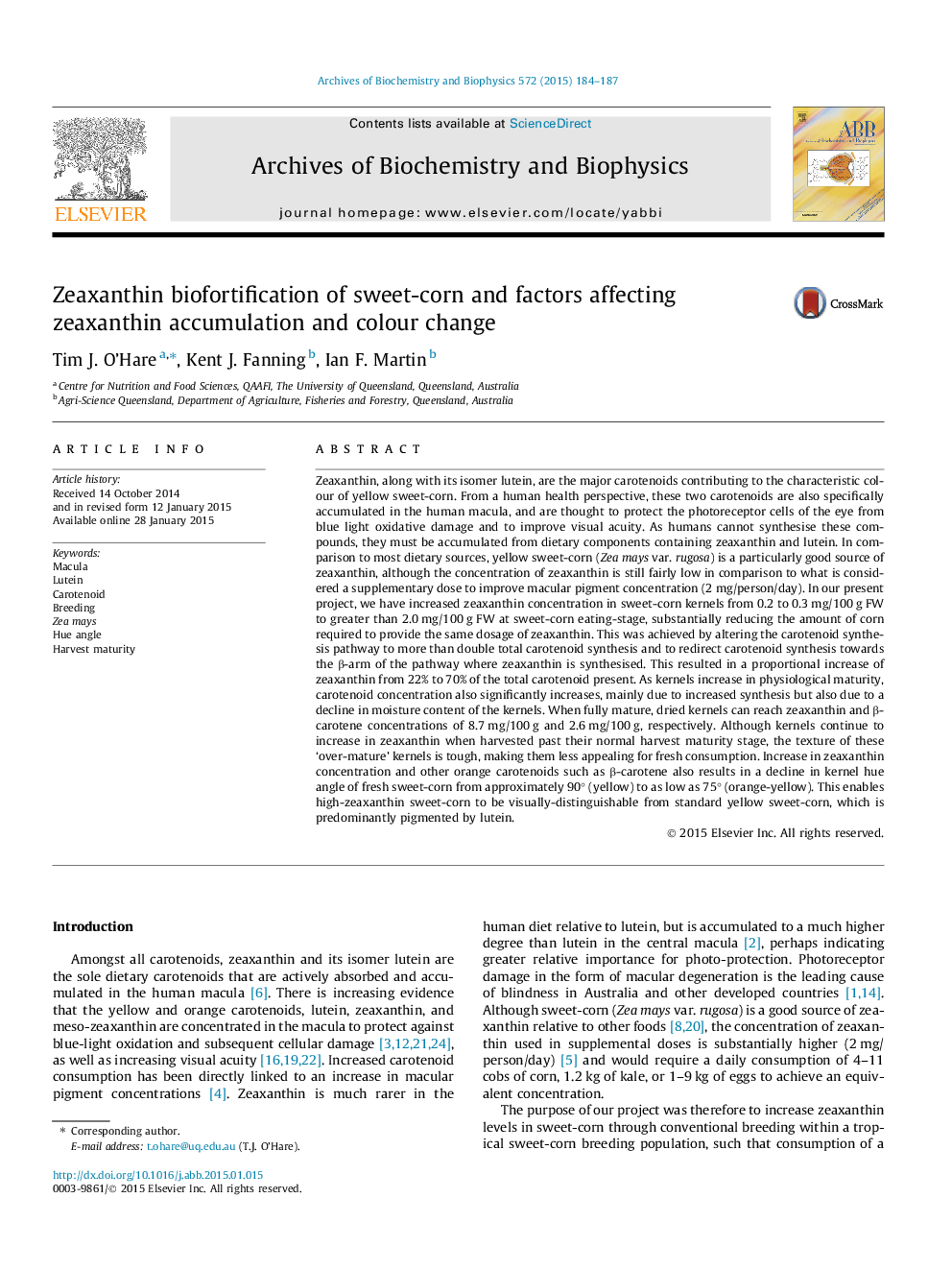| کد مقاله | کد نشریه | سال انتشار | مقاله انگلیسی | نسخه تمام متن |
|---|---|---|---|---|
| 8289860 | 1536330 | 2015 | 4 صفحه PDF | دانلود رایگان |
عنوان انگلیسی مقاله ISI
Zeaxanthin biofortification of sweet-corn and factors affecting zeaxanthin accumulation and colour change
دانلود مقاله + سفارش ترجمه
دانلود مقاله ISI انگلیسی
رایگان برای ایرانیان
کلمات کلیدی
موضوعات مرتبط
علوم زیستی و بیوفناوری
بیوشیمی، ژنتیک و زیست شناسی مولکولی
زیست شیمی
پیش نمایش صفحه اول مقاله

چکیده انگلیسی
Zeaxanthin, along with its isomer lutein, are the major carotenoids contributing to the characteristic colour of yellow sweet-corn. From a human health perspective, these two carotenoids are also specifically accumulated in the human macula, and are thought to protect the photoreceptor cells of the eye from blue light oxidative damage and to improve visual acuity. As humans cannot synthesise these compounds, they must be accumulated from dietary components containing zeaxanthin and lutein. In comparison to most dietary sources, yellow sweet-corn (Zea mays var. rugosa) is a particularly good source of zeaxanthin, although the concentration of zeaxanthin is still fairly low in comparison to what is considered a supplementary dose to improve macular pigment concentration (2 mg/person/day). In our present project, we have increased zeaxanthin concentration in sweet-corn kernels from 0.2 to 0.3 mg/100 g FW to greater than 2.0 mg/100 g FW at sweet-corn eating-stage, substantially reducing the amount of corn required to provide the same dosage of zeaxanthin. This was achieved by altering the carotenoid synthesis pathway to more than double total carotenoid synthesis and to redirect carotenoid synthesis towards the β-arm of the pathway where zeaxanthin is synthesised. This resulted in a proportional increase of zeaxanthin from 22% to 70% of the total carotenoid present. As kernels increase in physiological maturity, carotenoid concentration also significantly increases, mainly due to increased synthesis but also due to a decline in moisture content of the kernels. When fully mature, dried kernels can reach zeaxanthin and β-carotene concentrations of 8.7 mg/100 g and 2.6 mg/100 g, respectively. Although kernels continue to increase in zeaxanthin when harvested past their normal harvest maturity stage, the texture of these 'over-mature' kernels is tough, making them less appealing for fresh consumption. Increase in zeaxanthin concentration and other orange carotenoids such as β-carotene also results in a decline in kernel hue angle of fresh sweet-corn from approximately 90° (yellow) to as low as 75° (orange-yellow). This enables high-zeaxanthin sweet-corn to be visually-distinguishable from standard yellow sweet-corn, which is predominantly pigmented by lutein.
ناشر
Database: Elsevier - ScienceDirect (ساینس دایرکت)
Journal: Archives of Biochemistry and Biophysics - Volume 572, 15 April 2015, Pages 184-187
Journal: Archives of Biochemistry and Biophysics - Volume 572, 15 April 2015, Pages 184-187
نویسندگان
Tim J. O'Hare, Kent J. Fanning, Ian F. Martin,